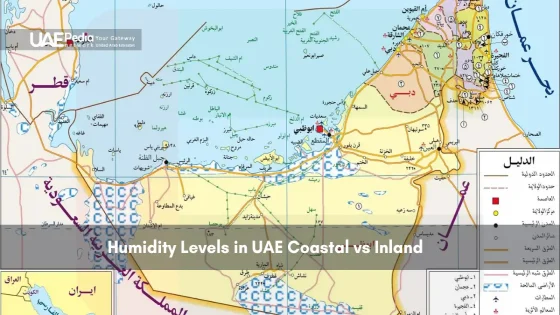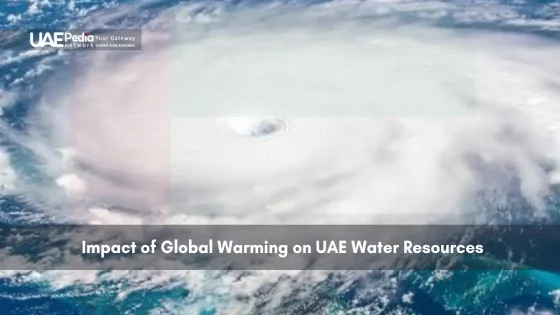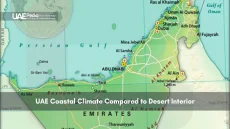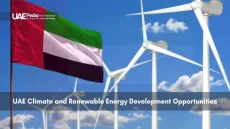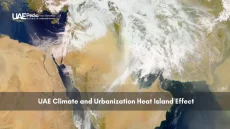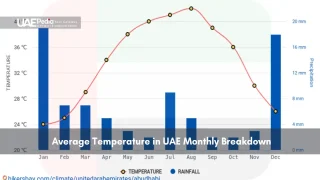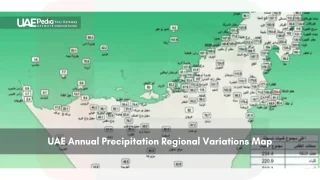What if a desert nation could rewrite its environmental story? Recent data reveals a 15% downward revision in historical emissions from this sun-drenched country – a shift as surprising as finding an oasis in Sharjah’s dunes.
This isn’t just paperwork updates. The government’s latest policy plans chart a course to net zero by 2050, with energy strategies leaning hard on carbon capture tech. Some experts cheer the transparency; others question if CCS can shoulder such heavy lifting.
We’re breaking down what these changes mean for residents and visitors alike. From solar farms stretching across Abu Dhabi to smart meters in Dubai apartments, every piece connects in this evolving puzzle. You’ll discover:
- How updated emissions tracking creates clearer benchmarks
- Why certain sectors face steeper reduction targets
- Where renewable energy fits into daily consumption patterns
Consider this your backstage pass to understanding the Emirates’ green ambitions – no jargon, just straight talk from those watching the policy sands shift.
Overview of the UAE’s Climate Policy Landscape
Picture this: a nation where sand meets solar panels, rewriting its energy playbook one policy at a time. Recent adjustments to emission tracking reveal a 15% drop in historical outputs—like finding extra pages in your favorite novel that change the whole plot.
New Numbers, Clearer Paths
The updated greenhouse gas inventory works like a library catalog system for pollution sources. It tracks everything from power plants to morning commutes. This precision helps shape realistic targets, including a projected 17% emissions cut by 2030.
Report Cards and Reality Checks
Climate Action Tracker’s evaluation mixes praise and pushback. Their “Almost sufficient” rating for 2030 goals nods to progress, while the “Insufficient” overall label hints at tougher roads ahead. As one analyst puts it:
“You can’t ace the test by only doing half the homework.”
Fossil fuel contracts still dominate energy discussions, with ADNOC expanding production even as solar farms multiply. It’s a dance between old loyalties and new ambitions—like keeping your flip phone while eyeing the latest smartphone.
Globally, these efforts position the country somewhere between front-row leaders and latecomers. The “fair share” debate continues, but clearer data helps everyone measure steps toward cleaner horizons.
Understanding UAE Climate and Climate Governance
Let’s break down the jargon. Imagine planning a road trip where everyone speaks different languages – that’s climate policy without clear definitions. We’ll translate the essentials:
Policy Dictionary Made Simple
Net zero works like your monthly budget: balance what you spend (emissions) with what you save (carbon removal). The country’s greenhouse gas inventory? Think of it as a detailed spreadsheet tracking every power plant exhaust and AC unit hum.
Carbon capture tech acts like a giant vacuum cleaner for factories. One ministry report compares it to “storing summer heat for winter nights” – practical magic for heavy industries.
Connecting Dots Between Desks and Deserts
The governance framework links local action with global promises. Renewable energy consumption targets mirror Paris Agreement goals, while waste reduction plans address both landfill levels and methane leaks.
Three pillars shape this approach:
- Transparent data collection (think fitness trackers for emissions)
- Sector-specific development roadmaps
- Public-private partnerships driving innovation
This isn’t just government work. Your morning coffee choices and hotel thermostat settings feed into broader commitments. As one energy official noted: “Every dirham saved on bills funds tomorrow’s solar farms.”
Emissions Targets and Reduction Strategies
Imagine a thermostat dialing down emissions while solar farms bloom where dunes once dominated. The nation’s updated climate playbook sets a 2030 target of 185 million tons of CO2 equivalent – like trimming 15% off a towering carbon bill through smarter accounting and tech bets.
2030 NDC Targets: New Math, New Momentum
Revised historical data act like a retroactive discount on past emissions. This recalibration sharpens focus for the 185 MtCO2e goal – equivalent to removing 25 million gas-powered cars from roads for a year. But here’s the twist:
- Carbon capture must handle 40% of heavy industry cuts by 2030
- Renewable power generation needs to triple current capacity
- Gas plants face efficiency upgrades or phased replacements
| Year | Target Emissions | Key Strategy |
|---|---|---|
| 2020 | 220 MtCO2e | Baseline adjustments |
| 2030 | 185 MtCO2e | CCS scaling + solar expansion |
| 2050 | Net Zero | 90% clean energy mix |
The Carbon Capture Tightrope
Leaning on carbon capture feels like using training wheels for a marathon – helpful short-term, risky long-term. One analyst warns:
“You can’t filter your way to zero while drilling new gas fields.”
The roadmap for sustainable growth now balances tech bets with consumer shifts. Think smart meters nudging AC usage, and EV charging stations outnumbering petrol pumps by 2040. It’s climate chess – every move matters.
Assessment of Current Policies and Sectoral Challenges
Balancing green dreams with black gold realities isn’t easy. The nation’s climate action plan faces a classic tug-of-war – ambitious carbon reductions versus expanding oil production. Independent analysts call current efforts “Insufficient,” noting gaps between policy promises and on-ground actions.
Role of Carbon Capture and Storage (CCS)
CCS tech gets treated like a magic eraser for emissions. But here’s the rub: capturing 40% of industrial CO₂ by 2030 requires scaling untested systems fast. One engineer compares it to “building parachutes mid-freefall” – thrilling if it works, catastrophic if not.
Investment in Fossil Fuels Versus Renewables
Money talks louder than climate pledges. For every $1 spent on solar farms, $3 still flows into oil infrastructure upgrades. This split focus creates sectoral whiplash:
- Power plants retrofit for efficiency while drilling new gas fields
- EV charging networks expand as petrochemical plants multiply
- Smart grids compete with aging pipelines for maintenance funds
The transport sector mirrors this tension. Dubai’s metro cuts emissions, but highway expansions encourage gas-guzzling commutes. Until renewable investments outpace fossil fuel spending, climate action risks becoming half-measure theater.
Sectoral Analysis: Power, Industry, and Transport
Imagine juggling solar panels and oil barrels while racing toward a net-zero finish line. Three economic heavyweights – power generation, heavy industry, and transportation – drive both emissions and innovation in this desert-to-desalination story.
Power Sector: Renewable Expansion and Fossil Gas Reliance
The Noor Abu Dhabi solar farm stretches like a mirrored sea, powering 90,000 homes. Yet gas-fired plants still supply 80% of electricity. This duality defines current practices: solar capacity tripled since 2020, while CCS-equipped gas facilities act as backup dancers during sandstorms.
Industry and Oil & Gas Production Challenges
ADNOC’s $15 billion decarbonization pledge clashes with plans to boost crude output. Carbon capture projects at steel plants resemble high-stakes chemistry experiments – promising, but unproven at scale. One refinery manager admits: “We’re rewiring the engine mid-flight.”
Transport Emission Reduction Initiatives
Dubai’s metro now shuttles 700,000 daily riders past new EV charging stations. The strategy? Replace 10% of gas-guzzlers with electric models by 2030 while expanding bicycle lanes in 90°F heat. It’s like training for a marathon in flip-flops – ambitious, but possible with smart policy.
Three sectors, three tightropes:
- Power: Balancing grid stability with renewable adoption
- Industry: Modernizing legacy systems without economic shocks
- Transport: Shifting consumer habits through infrastructure
Roadmap for Policy Enhancements and Future Actions
Charting a course through shifting sands requires both compass and courage. The nation’s national roadmap now needs sharper turns toward sun-powered solutions and fewer detours through fossil fuel corridors. Let’s explore how policy tweaks could accelerate progress.
Three Shifts for Faster Progress
First: flip the energy script. Denmark’s wind power success shows how clear targets attract investment. Why not mandate 70% renewable electricity by 2035 instead of 50%? Solar farms could bloom faster than desert flowers after rain.
Second: rethink carbon math. Current plans lean too hard on carbon capture – the policy equivalent of hoping your parachute packs itself. Better to redirect those funds toward battery storage tech that actually keeps lights on after sunset.
Third: make every sector pull its weight. Transport needs electric vehicle mandates for fleet operators. Heavy industry requires circular economy regulations. As one sustainability director told me:
“We need carrots, sticks, and recipe books for clean transitions.”
Successful models abound. Morocco’s Noor solar complex powers cities after dark. Singapore’s carbon tax pushed industries to innovate. These aren’t moon shots – they’re proven blueprints.
The path forward demands teamwork. Citizens lowering AC use. Companies adopting clean tech. Policymakers setting bold but achievable milestones. Together, these steps form a bridge across the climate crisis chasm – sturdy enough to hold tomorrow’s hopes.
Implementing Change: Strategies and International Cooperation
Think of global climate action as a potluck dinner – everyone brings their best dish to share. The Emirates’ recipe blends homegrown solutions with borrowed wisdom, creating a fusion menu for cutting emissions. Recent partnerships like the Global Methane Pledge show how cross-border teamwork spices up progress.
Borrowing Tools, Building Bridges
Joining the Climate & Clean Air Coalition (CCAC) lets local experts swap playbooks with global peers. A Ministry of Energy official describes it as “crowdsourcing survival skills for our overheating planet.” Joint ventures with US solar firms and European hydrogen pioneers accelerate renewable energy adoption while maintaining oil & gas exports – a delicate balancing act.
Domestic strategies mix old and new:
- Smart grids learning from Denmark’s wind success
- Carbon capture projects refined through Japanese tech shares
- EV charging networks modeled on California’s highway systems
Yet contradictions linger. While launching $6B in clean energy funds, national oil companies still plan production boosts through 2030. It’s like dieting while baking cookies – possible, but requiring strict portion control.
Three keys unlock faster change:
- Aligning corporate carbon targets with UN Sustainable Development Goals
- Using blockchain to track cross-border emissions data
- Training fossil fuel workers for solar farm maintenance roles
As Dubai’s COP28 president noted:
“The climate crisis won’t check passports – neither should our solutions.”
From boardrooms to neighborhood councils, everypartof society now plays a role in this high-stakes collaboration.
Reflecting on Progress and Charting the Future of UAE Climate Action
Sun-scorched highways now double as renewable energy labs in this desert nation’s evolving story. The enhanced NDC submission shows sharper data-driven targets, while long-term strategies reveal growing policy muscle. But let’s not sugarcoat it – betting big on carbon capture feels like building sandcastles against rising tides.
Progress shines through clearer emissions tracking and solar farms mushrooming across dunes. Yet fossil fuel production plans still whisper louder than wind turbines. Bridging this gap demands smarter partnerships: sharing battery tech with Morocco’s solar pioneers, adopting Norway’s carbon pricing models, and reimagining transport networks through California’s EV playbook.
Here’s the reality check. Current reductions won’t hit the 1.5°C bullseye without tripling renewable capacity and rewiring industry practices. Every rooftop solar panel and adjusted AC unit matters – climate action thrives on daily choices as much as grand policies.
So where next? Keep governments accountable through transparent data. Push businesses beyond carbon offsets. Celebrate local wins while eyeing global impacts. This isn’t just the Emirates’ journey – it’s our shared tightrope walk toward a livable future. Ready to join the climate symphony? Your verse starts now.
The UAE aims to expand renewables like solar while maintaining oil/gas exports, betting on carbon capture tech to offset emissions. Current policies still prioritize fossil fuel infrastructure, but solar projects like Al Dhafra and Mohammed bin Rashid Park show growing clean energy commitments.
Initiatives include expanding Dubai Metro routes, promoting electric vehicles with tax incentives, and testing hydrogen-powered trucks. Challenges remain in reducing car dependency and boosting public transit use beyond major cities.
Current targets fall short of limiting warming to 1.5°C, per Climate Action Tracker. Revised 2022 NDCs increased ambition, but reliance on gas and delayed fossil fuel phaseouts keep the UAE rated “Highly Insufficient” for Paris alignment.
CCS features heavily in ADNOC’s net-zero strategy, with projects like Al Reyadah capturing 800,000 tons annually. However, experts argue scaling this to offset continued oil production remains unproven at necessary levels.
Dubai’s 5GW Mohammed bin Rashid Solar Park now powers 320,000 homes. Abu Dhabi launched the 2GW Al Dhafra plant – world’s largest single-site solar farm. Renewables reached 9% of energy mix in 2023, targeting 50% by 2050.
Emirates Steel installed region’s first carbon capture for steelmaking, while aluminum giant EGA uses solar-smelted “CelestiAL” metal. Heavy industries still face challenges decarbonizing processes like cement production.
The UAE hosts IRENA headquarters, co-leads the AIM for Climate initiative with billion pledged, and partners with US on 0B clean energy projects. These alliances help accelerate tech transfer and green financing.


